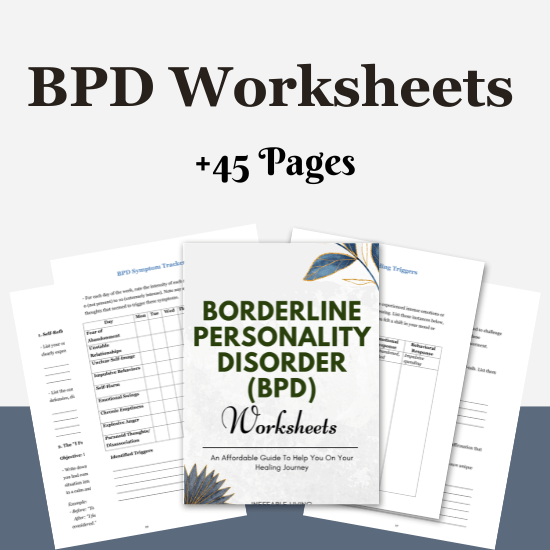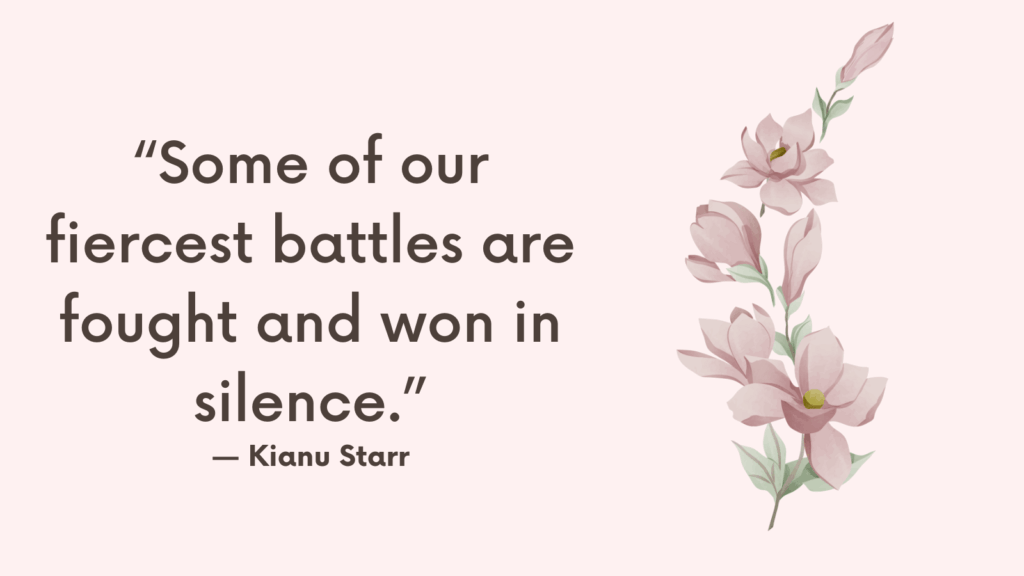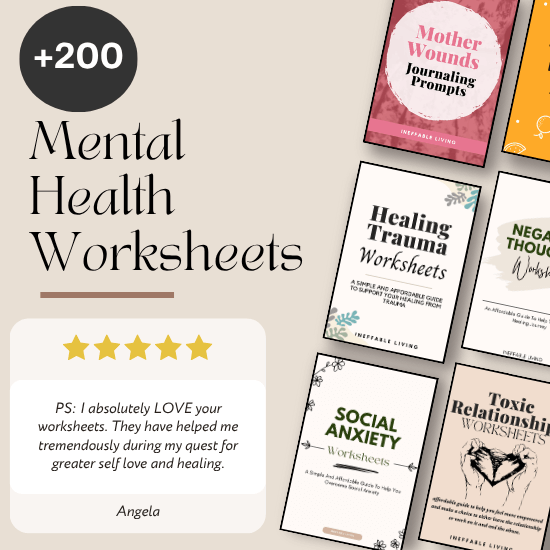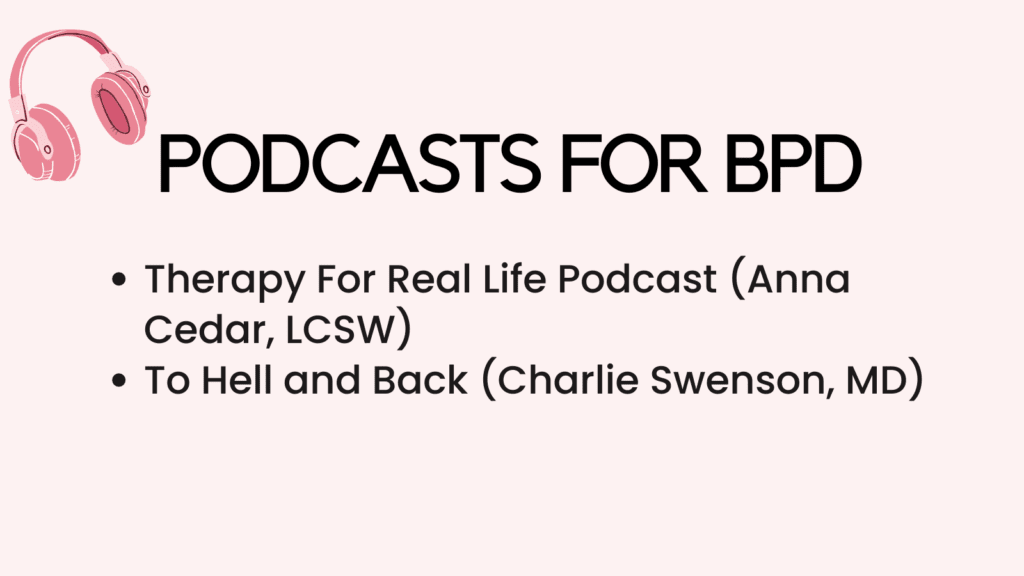Borderline Personality Disorder (BPD) and Complex Post-Traumatic Stress Disorder (C-PTSD) often look similar on the surface — emotional flashbacks, intense fear of abandonment, mood swings, and relationship struggles. Because of this overlap, many people wonder: Do I have BPD, or is it unresolved trauma? The answer matters, because understanding the root of your pain shapes how you heal.
Here’s how to tell the difference — and why the line between them is more about nuance than labels.
What is BPD?
Borderline Personality Disorder (BPD) is a mental health condition marked by intense emotional swings, unstable relationships, a fear of abandonment, impulsive behavior, and a shifting sense of self. People with BPD often experience emotions more deeply and for longer than others, which can lead to overwhelming inner experiences and difficulty regulating feelings.
Think of it as living with a very sensitive emotional thermostat that reacts quickly and intensely to triggers — especially around relationships and self-worth.
Related: Top 7 Skills For Coping With BPD [+ BPD FREE Resources]
What is C-PTSD?
Complex Post-Traumatic Stress Disorder (C-PTSD) is a condition that results from prolonged or repeated trauma, especially during childhood or in situations where escape feels impossible (e.g., abuse, neglect, captivity). It shares symptoms with PTSD (like flashbacks and hypervigilance) but also includes long-term effects such as emotional dysregulation, deep shame or guilt, difficulty trusting others, and a fragmented sense of self.
C-PTSD isn’t just about what happened — it’s about how those experiences reshaped a person’s ability to feel safe, connected, and whole.
BPD vs. CPTSD: How to Tell the Difference Between Trauma and Borderline?
1. The Root of the Pain
- BPD is typically rooted in early attachment trauma, emotional invalidation, or unstable relationships during childhood. The core issue often revolves around identity disturbance, emotional dysregulation, and interpersonal instability.
- C-PTSD is a response to prolonged trauma (often emotional abuse, neglect, captivity, or long-term toxic relationships). The focus is more on chronic fear, shame, hypervigilance, and a loss of self.
While both can stem from trauma, C-PTSD is about surviving trauma. BPD is about how that trauma reshaped your sense of self and relationships.
Related: What Is Quiet Borderline Personality Disorder?
2. Identity and Sense of Self
- BPD: Often involves identity confusion — not knowing who you are, shifting your personality depending on who you’re with, feeling “empty” inside, or experiencing frequent changes in values, appearance, and goals.
- C-PTSD: Typically includes a loss of identity due to abuse or control — you may feel disconnected from your past self or unsure who you are, but it’s usually the result of trauma suppression, not instability.
If your identity feels unstable, inconsistent, or like you don’t exist unless someone reflects you — that points more toward BPD.
3. Emotional Regulation
- BPD: Emotional responses are often sudden, extreme, and short-lived. You may flip from love to hate quickly or experience rage, shame, or panic that lasts minutes to hours.
- C-PTSD: Emotions may be more chronic and simmering — ongoing anxiety, numbness, guilt, or emotional flashbacks that feel like being trapped in a younger version of yourself.
If your emotions feel like emotional whiplash — intense, fast, and unpredictable — it’s more likely BPD.
4. Relationship Patterns
- BPD: Marked by unstable and intense relationships — idealizing someone one day, fearing abandonment the next, then devaluing them when you feel hurt. There’s often a desperate need for closeness and fear of it.
- C-PTSD: There may be difficulty trusting others, avoidance of intimacy, or constantly choosing unsafe relationships, but not the same pattern of emotional extremes or emotional push-pull dynamics.
If your relationships feel like constant emotional storms, with intense highs and lows, that leans more toward BPD.
Related: Borderline Personality Disorder Support Group
5. Abandonment and Rejection
- BPD: Even small signs of rejection can cause panic, rage, or emotional collapse. A missed call, short reply, or request for space can feel like complete abandonment.
- C-PTSD: Fear of rejection may be present, but it often shows up as avoidance, people-pleasing, or withdrawal rather than emotional outbursts.
If your response to emotional distance is immediate fear and a need to pull someone close or push them away — that’s common in BPD.
6. Dissociation and Flashbacks
- C-PTSD: Often includes emotional flashbacks — overwhelming feelings of shame, fear, or helplessness without visual memory. Dissociation, numbing, and zoning out are also common coping responses.
- BPD: Dissociation may occur during extreme stress (especially during conflict), but it’s usually brief. The emotional response is more external and reactive than internal and frozen.
If you feel like you’re reliving emotional trauma without a clear memory — more likely C-PTSD. If you feel emotionally explosive or fragmented during fights — more likely BPD.
7. Shame and Self-Perception
- BPD: You may experience intense shame that flips into anger, self-hate, or suicidal thoughts. It can come on suddenly and be triggered by small rejections.
- C-PTSD: There’s often a persistent, quiet sense of worthlessness and guilt that stems from being emotionally wounded over time.
If you feel like you’re “bad,” “too much,” or “broken” and react to those feelings with self-sabotage or rage, BPD may be more accurate.
8. Impulsivity and Risky Behavior
- BPD: Impulsivity is a core trait — spending, sex, binge eating, reckless driving, or self-harm in response to emotional pain or emptiness.
- C-PTSD: Risky behaviors may be present but usually develop as coping mechanisms — not as intense or unpredictable responses to emotional triggers.
If your behavior feels like you’re constantly trying to escape or feel something — especially in sudden emotional crises — that’s a BPD hallmark.
Related: Borderline Personality Disorder (BPD) Resources (Information, APPS, Podcasts, TED Talks, Books)
9. Diagnosis and Overlap
Many people meet criteria for both BPD and C-PTSD. Trauma can cause symptoms that mimic personality disorders. And some clinicians believe that BPD is best understood as a trauma-related disorder itself.
That said, BPD is more about emotional instability in relationships and self-image. C-PTSD is more about prolonged trauma and the damage it causes to your self-worth and safety.
10. Treatment Paths
- BPD: Best treated with Dialectical Behavior Therapy (DBT), which helps with emotional regulation, distress tolerance, mindfulness, and relationship skills.
- C-PTSD: Often treated with trauma-focused therapy, such as EMDR, somatic experiencing, or internal family systems therapy — approaches that heal nervous system dysregulation and emotional memory.
If you’re unsure, a trauma-informed therapist can help you sort through your history and symptoms with compassion.

Conclusion
Whether it’s BPD, C-PTSD, or both — the most important thing is this: you are not broken. You are someone who’s been deeply hurt and is trying to survive in a world that hasn’t always been kind. Labels can guide healing, but they don’t define your worth.
Start where you are. Get support that feels safe. And remember — healing doesn’t require a perfect diagnosis. It just requires a willingness to face your pain, care for your nervous system, and build a life that feels more stable, connected, and whole.



![BPD Support Groups [Online & In-Person]](https://ineffableliving.com/wp-content/uploads/2022/09/Borderline-Personality-Disorder-Support-Group-1024x576.png)